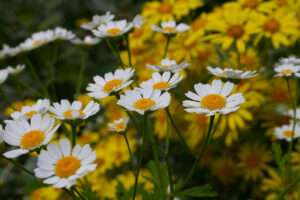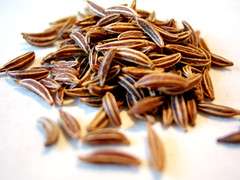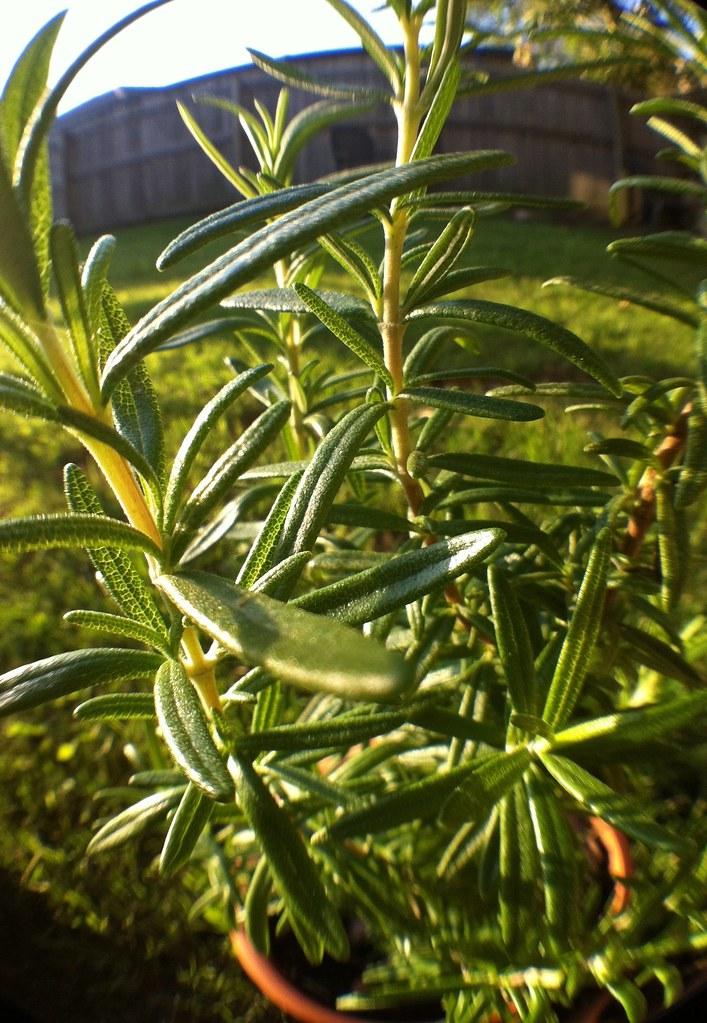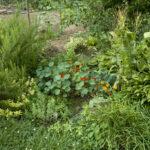Chamomile is a herb that has been used for centuries due to its many health benefits. This plant belongs to the daisy family and is native to Europe, North Africa, and some parts of Asia. The plant can be used in many forms, including teas, oils, and creams. In this article, we will explore the benefits of chamomile and how to grow, care for and harvest it.
Benefits of Chamomile
Promotes Relaxation and Sleep

Chamomile is known for its calming effects and can help promote relaxation and better sleep. Its properties help reduce anxiety, stress, and insomnia. Drinking tea before bed can be a great way to relax and unwind after a long day.
Relieves Pain and Inflammation
Chamomile contains anti-inflammatory properties that can help relieve pain and inflammation. This makes it a popular remedy for conditions such as arthritis, back pain, and menstrual cramps.
Boosts Immunity
Chamomile is high in antioxidants, which can help boost the immune system. These antioxidants help protect the body from damage caused by free radicals and reduce the risk of chronic diseases.
Improves Digestion
Chamomile can help soothe an upset stomach and promote healthy digestion. It is commonly used to relieve digestive issues such as bloating, nausea, and diarrhea.
Enhances Skin Health
Chamomile is a great ingredient for skin care products due to its anti-inflammatory and antioxidant properties. It can help soothe irritated skin, reduce redness, and promote healing.
How to Grow Chamomile
Chamomile is a relatively easy herb to grow, making it a great option for beginner gardeners. Here are some tips for growing chamomile:
Choose the Right Location
Chamomile thrives in full sun and well-draining soil. Make sure to choose a location that receives at least six hours of sunlight per day.
Start from Seeds
Chamomile seeds can be planted directly in the soil or started indoors and then transplanted outside. Seeds should be planted about 1/4 inch deep and spaced about 6–8 inches apart.
Water Regularly
Chamomile needs regular watering, especially during hot and dry weather. Make sure to water the plants deeply and frequently, but be careful not to overwater them.
Fertilize Sparingly
Chamomile does not require a lot of fertilizer. In fact, too much fertilizer can harm the plants. If you choose to fertilize, use a natural fertilizer such as compost or manure.
Harvest Regularly
The plant blooms in the summer and can be harvested throughout the season. Make sure to harvest the flowers before they start to fade. You can either dry the flowers for tea or use them fresh in recipes.
How to Care for Chamomile
The plant is a low-maintenance herb, but it still requires some care to thrive. Here are some tips for caring for chamomile:
Prune Regularly
Chamomile benefits from regular pruning to encourage healthy growth and prevent it from becoming too leggy. You can prune the plants back by about a third after they finish blooming.
Keep an Eye on Pests
The plant is susceptible to pests such as aphids and spider mites. Keep an eye on the plants and use organic methods such as neem oil or insecticidal soap to control pests if necessary.
Mulch Around the Plants
Mulching around the plants can help retain moisture and keep the soil cool during hot weather. Use organic materials such as straw or shredded leaves for mulch,
Divide the Plants
Over time, plants can become crowded and may benefit from being divided. This is best done in the spring or fall when the plants are not actively blooming.
Protect from Extreme Weather
The plant can be sensitive to extreme weather conditions such as high winds, heavy rain, and frost. Make sure to protect the plants during these conditions by covering them with a cloth or plastic sheeting.
How to Harvest Chamomile
Harvesting is relatively easy, and there are two main methods to do so:
Harvesting the Flowers
To harvest flowers, wait until the flowers are fully open and in bloom. Gently pluck the flowers from the stem and place them in a basket or bowl.
Cutting the Plants
To harvest plants, use a pair of scissors or pruning shears to cut the stems about 1–2 inches above the ground. You can then hang the plants upside down in a dry, well-ventilated area to dry.
Once the flowers or plants are harvested, they can be used fresh or dried for tea, oils, or other remedies.
It is a versatile and beneficial herb that is easy to grow, care for, and harvest. It has many health benefits, including promoting relaxation and sleep, relieving pain and inflammation, boosting immunity, improving digestion, and enhancing skin health. By following the tips in this article, you can successfully grow, care for, and harvest your own chamomile plants.
Keywords: benefits, health, relaxation, sleep, pain, inflammation, immunity, digestion, skin health, growing, care, harvesting.
Check out our Novel Writing Workbooks
Check out Little Tree Food Forest for articles on food forests and homesteading.
Check out FoodieScapes for articles on growing, fermenting and preserving food
Check out StoryScapes.World for articles on writing.
Related Content
Related Content
Subscribe to our newsletter to get information delivered to your inbox on edible landscaping, growing food and medicinal plants, growing mushrooms, foraging, fermentation, food preservation, raising small livestock, and more.













